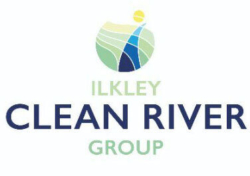The ICW
(a) Impact on quality
- What is the quality of effluent going into the ICW and what is the quality going out?The ICW influent is at current Final Effluent quality, and treatment provided by the ICW is designed to reduce the bacti load however, we anticipate that it will also improve BOD / Suspended and suspended solids. Ammoniacal-Nitrogen may also be slightly reduced.
- What is the treatment capacity of the system designed for Ilkley and how does this compare to what we already know about existing systems/research?The ICW is designed to treat the future flow to full treatment flows of 300 l/s and consists of 1.9ha of free surface water cells with over 170,000 plants.
- Will it be a breeding ground for E Coli? Because there is constant flow going through the ICW, and because it is a free surface water wetland, there is E. coli improvement through the ICW.
(b) Maintenance
- An ICW of this size will attract wildlife. What are the plans to stop mobilisation by wildfowl which would make the whole ICW fail? Increased wildlife by creating habitat and increasing biodiversity is an asset to the ICW.
- How will the ICW be maintained to stop a preferential pathway forming (mini river) and undermining the whole process?The interlinked cells are designed and engineered to avoid preferential flow-paths, so that the optimal area is used to provide treatment.
- How is the ICW affected by extreme temperatures both hot and cold?Cold temperatures will impact NH4-N removal only, not BOD and SS removal. We have applied a temperature coefficient in our models to allow for this NH4-N removal dip during the winter months.
- How is the ICW affected by heavy rainfall? Nature based assets are resilient to heavy rainfall, the plants will recover after being submerged. The asset is constructed in flood zone level 3 and is therefore designed to be a floodable asset.
- How do you prevent eutrophication during prolonged periods of rainfall? There is constant flow going through the asset, it is not a body of still standing water. The ICW influent is designed to current final effluent standards, and is therefore already low in NH4-N. Both elements reduce risk or eutrophication.
- How do you handle clogging and matrix saturation? The ICW is a flow through system, designed to be able to take maximum flows through the STW. This eliminates the risk of clogging and saturation.
- How vulnerable are the plant species used to environmental damage and how much maintenance is required?The plants and beds require a low level of maintenance, based on visual inspection and a low percentage of replanting.
The Reed Bed
How effective is the water quality treatment by the Reed bed? Will it be as good as the full tertiary treatment? I presume this question is aimed at the aerated rush bed. This is a more heavily engineered system, a hybrid green-grey system which includes aeration optimising treatment and allowing for a smaller footprint. The assets implemented on the Ilkley scheme all comply with the effluent standards set by the EA.
De-combining
We note there is no further de-combining in the plan. Yorkshire Water seems to be intending to treat all the clean and foul water which is a significant capacity requirement. We have previously identified areas of the town where estates are decombined up to the point they meet the main road sewer (the estate to the west of Victoria Road and south of Skipton Road) and we discussed this again at our last meeting. Why has decombining from this point not been considered to reduce the inflow to the STW? This is something that we will review and consider alongside the current proposals.
Overall
How can we be assured that whilst the number of ‘spills’ is significantly reduced (which we welcome) that the proposals will not reduce the quality of the treated effluent? The treated effluent quality is monitored and will not decrease because of spills reduction. All assets are designed to meet the required standards set by the EA.
